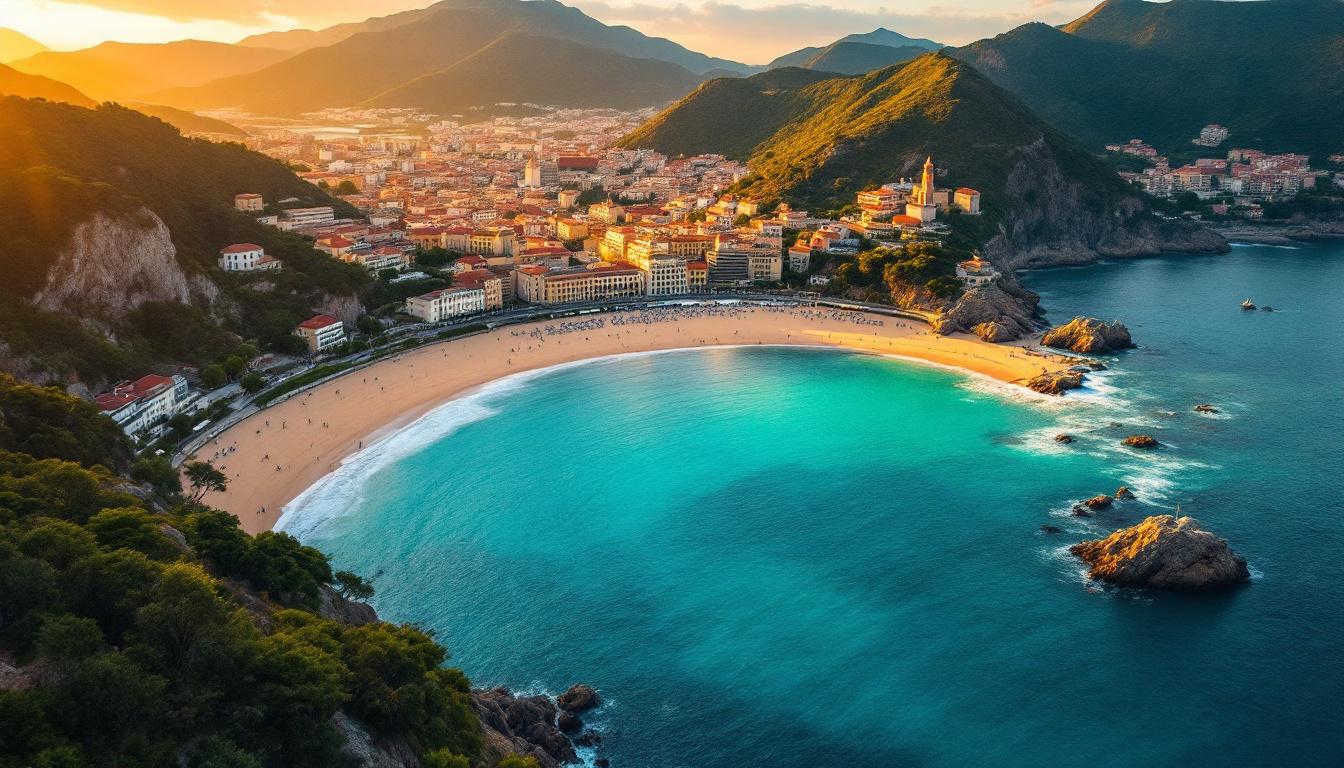San Sebastián might be Spain’s best-kept culinary secret, but this gleaming coastal gem offers far more than its 16 Michelin stars. Perched along the Bay of Biscay in Spain’s Basque Country, this elegant city combines Belle Époque architecture with a dramatic natural setting that has earned it the nickname “Pearl of the Cantabrian Sea.”
Where three perfect beaches meet mountain wilderness
San Sebastián’s geographic setting feels almost too perfect to be real. The stunning La Concha Beach curves in a perfect crescent between two mountains, with turquoise waters lapping against golden sand. This urban beach consistently ranks among Europe’s finest, offering postcard views from every angle.
“Our bay is shaped like an amphitheater,” explains local guide Mikel Elorza. “The mountains embrace the city, creating a natural shelter that makes our climate milder than surrounding areas.”
For more adventurous beachgoers, Zurriola Beach attracts surfers year-round with reliable Atlantic swells, while families favor Ondarreta Beach for its calm waters and proximity to Mount Igueldo’s vintage amusement park.
The world’s most extraordinary food scene hides in plain sight
San Sebastián boasts more Michelin stars per square meter than any city except Kyoto, Japan. Yet its most remarkable culinary experience happens not in fine dining establishments but in humble bars lining the narrow streets of the Old Town (Parte Vieja).
Here, pintxos (pronounced “peen-chos”) – the Basque version of tapas – elevate bar food to an art form. Each establishment displays dozens of intricate, bite-sized creations on their counters, from traditional anchovy-olive-pepper skewers to modern molecular gastronomy experiments.
“Pintxos culture isn’t just about the food,” notes chef Andoni Luis Aduriz of the acclaimed Mugaritz restaurant. “It’s a social ritual where we move from bar to bar, having one or two bites and a small drink at each place. The experience is as important as the flavors.”
The Basque identity thrives in every corner
Behind San Sebastián’s cosmopolitan façade beats a proudly Basque heart. The city’s official name – Donostia – comes from the Basque language, Euskera, one of Europe’s oldest and most mysterious tongues with no known linguistic relatives.
This distinct cultural identity manifests in traditional sports like pelota (a high-speed handball game) and stone-lifting competitions that still draw crowds. The San Telmo Museum offers a fascinating deep dive into Basque heritage, housed within a 16th-century Dominican convent.
The scenic hike every visitor should take
For the city’s most spectacular views, climb Mount Urgull, the hill crowned by a 12th-century fortress and towering Christ statue. The 45-minute walk from the Old Town rewards hikers with panoramic vistas across the bay to Mount Igueldo and the open Atlantic beyond.
At the western end of La Concha Bay, don’t miss Eduardo Chillida’s “Comb of the Wind” sculpture, where three steel pieces emerge from rocky outcrops, creating a mesmerizing dialogue between art and nature as waves crash around them.
When to visit this Basque paradise
Unlike many coastal destinations, San Sebastián shines year-round. Summer brings perfect beach weather and the prestigious International Film Festival, while fall offers milder temperatures ideal for pintxos crawls. Winter feels cozy with fewer tourists, and spring bursts with cultural events.
For a truly magical experience, visit during Semana Grande in August, when fireworks competitions illuminate the bay each night, or during January’s Tamborrada, when the entire city transforms into a 24-hour drumming festival.
San Sebastián exists in perfect equilibrium – sophisticated yet down-to-earth, traditional while embracing innovation, and compact but offering endless discoveries. Like Japan’s volcanic villages, it represents a unique cultural microcosm. This Basque beauty manages to feel simultaneously like Europe’s most elegant seaside resort and its most exciting culinary laboratory – a rare combination that leaves visitors planning their return before they’ve even departed.
